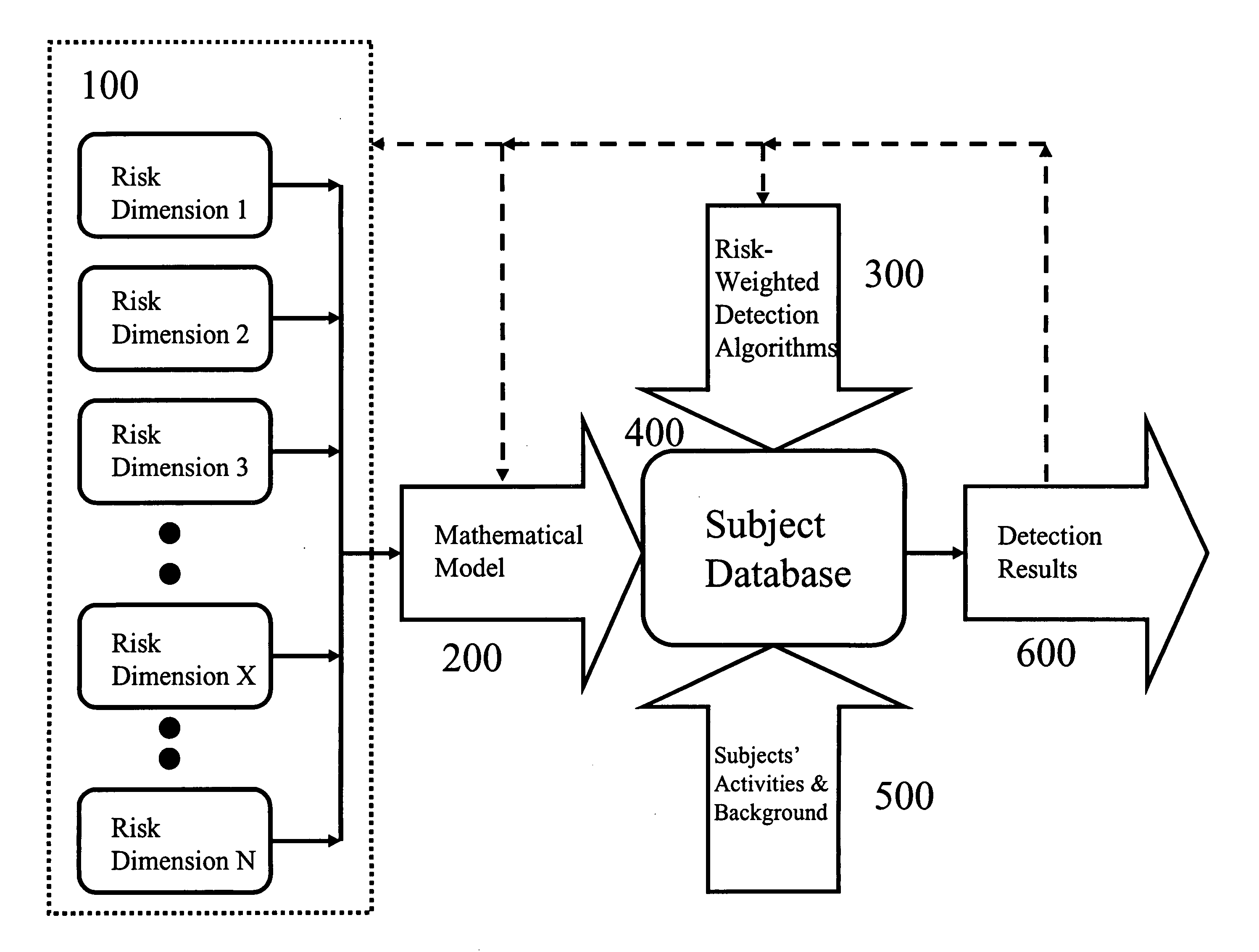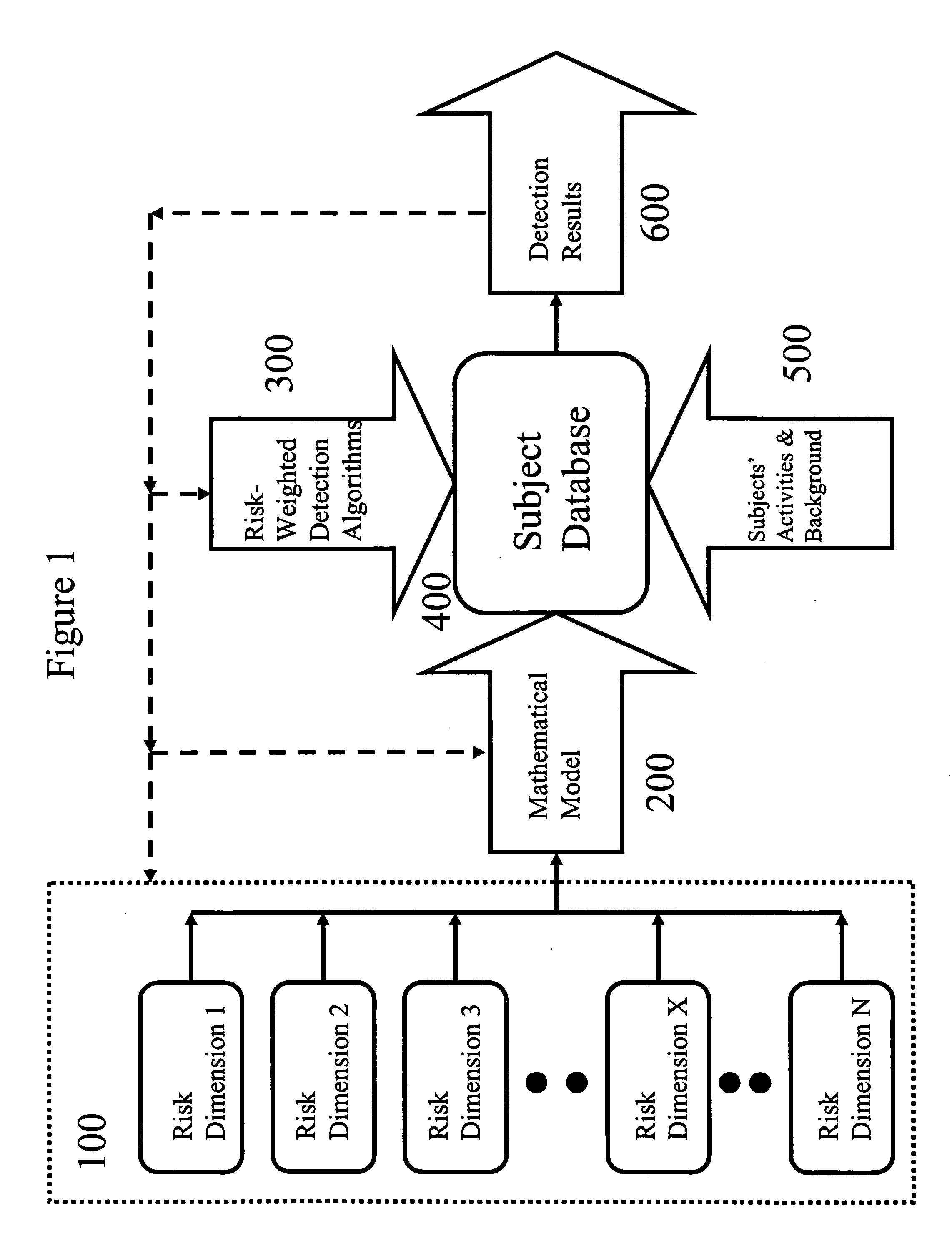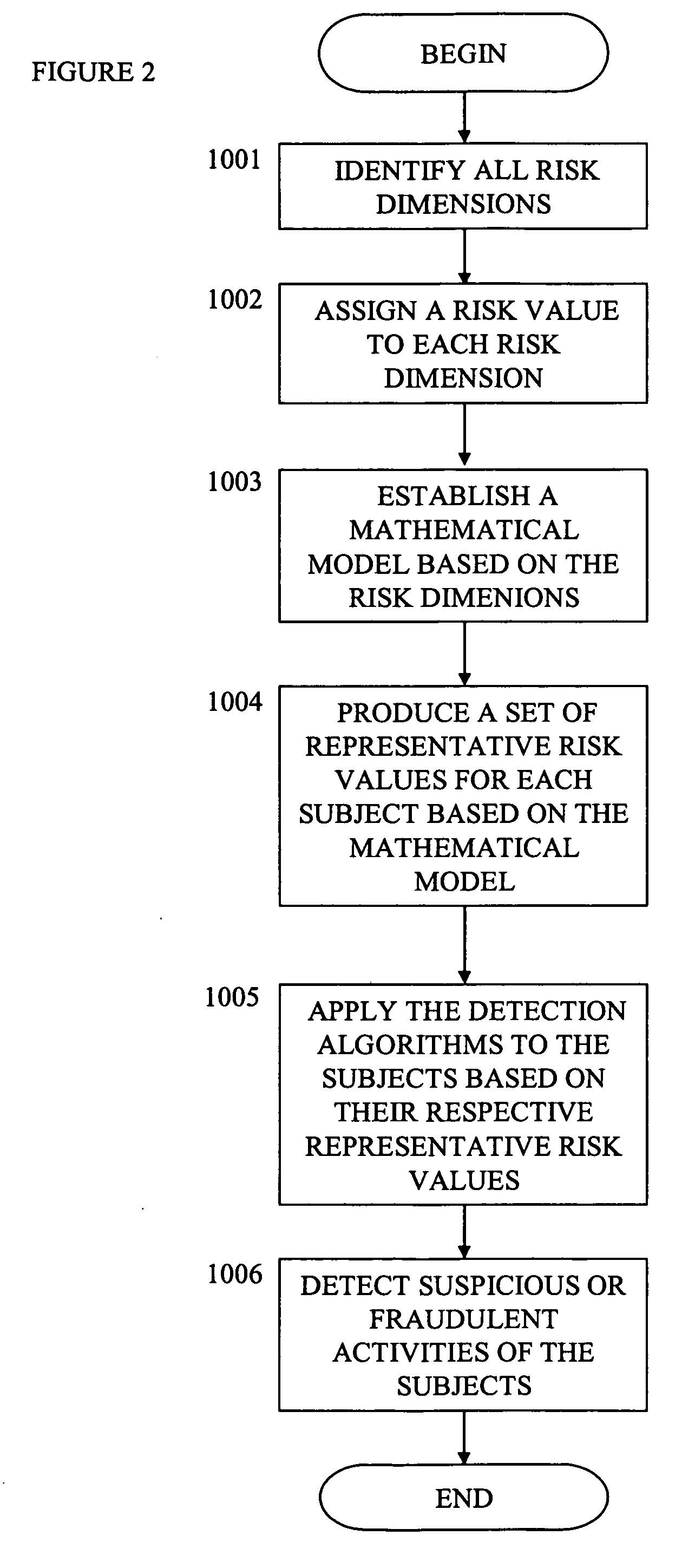Dynamic multidimensional risk-weighted suspicious activities detector
a detection device and multi-dimensional technology, applied in the field of computer assisted technology for detecting suspicious and fraudulent activities, can solve the problems of loss and damage to the financial institution, no way for the bank, and constant change of clients, so as to prevent negative effects
- Summary
- Abstract
- Description
- Claims
- Application Information
AI Technical Summary
Benefits of technology
Problems solved by technology
Method used
Image
Examples
Embodiment Construction
[0045]The present invention potentially includes a number of embodiments to provide maximum flexibility in order to satisfy many different needs of both sophisticated and unsophisticated users. Accordingly, we will describe in detail only a few examples of certain preferred embodiments of the present invention and combinations of these embodiments
[0046]In this exemplary embodiment, in order to detect the suspicious and fraudulent activities of a group of subjects, the subjects' background and activities data are first input into a database.
[0047]Risks are multidimensional by nature. The first step to managing risks is to integrate multidimensional risks into an easy-to-manage set of risk values.
[0048]To reach that purpose, in one embodiment of the present invention, the user assigns a risk value to each of the risk dimensions one by one.
[0049]In another embodiment of the present invention, the user uses a risk template to produce a set of risk dimensions and assigns a risk value to ...
PUM
 Login to View More
Login to View More Abstract
Description
Claims
Application Information
 Login to View More
Login to View More - R&D
- Intellectual Property
- Life Sciences
- Materials
- Tech Scout
- Unparalleled Data Quality
- Higher Quality Content
- 60% Fewer Hallucinations
Browse by: Latest US Patents, China's latest patents, Technical Efficacy Thesaurus, Application Domain, Technology Topic, Popular Technical Reports.
© 2025 PatSnap. All rights reserved.Legal|Privacy policy|Modern Slavery Act Transparency Statement|Sitemap|About US| Contact US: help@patsnap.com



